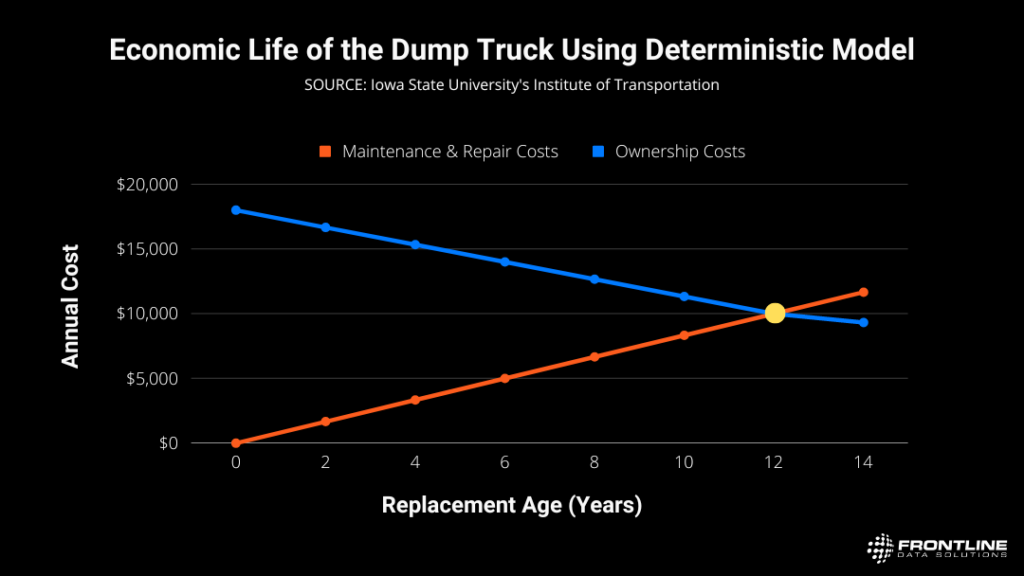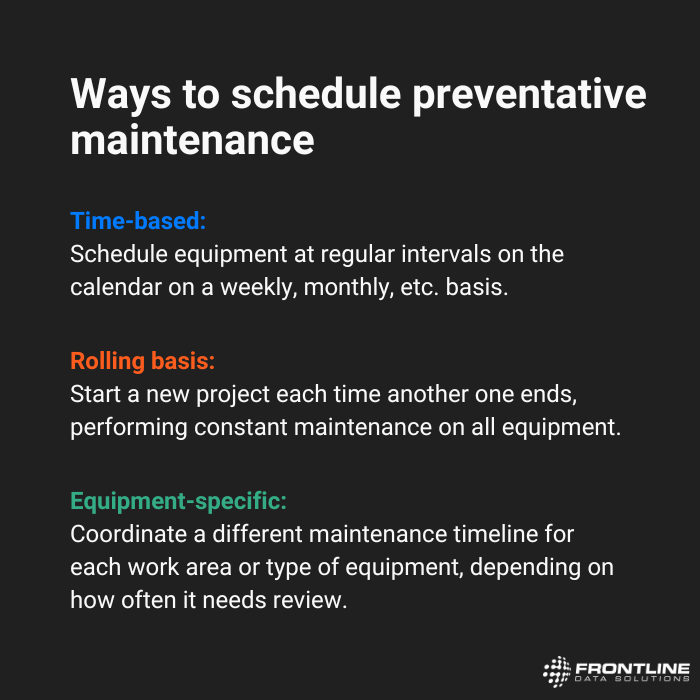How to create a preventative maintenance program
Overhauling or creating a preventative maintenance program can be a daunting task. Especially if your facilities team already has a backlog of projects to complete. A 2021 survey of more than 200 manufacturing sites found that aging equipment and a lack of understanding of new options/technologies were the top two challenges for sites that wanted to improve their maintenance.
If you’re considering whether to revamp your program or start from scratch, it’s important to know all the advantages that preventative maintenance can offer. With that understanding, you can build a program that targets all the benefits you want and that ultimately makes life easier for your facilities team.
The purpose of preventative maintenance
Because of the effort that goes into changing a process or launching a new program, it’s easy to forget why you wanted to do it in the first place. When it comes to facility maintenance, however, the advantages write themselves.
Not only does it save your site money (in both direct and indirect cost savings), but it improves working conditions and protects consumers as well. If you’re considering whether to adopt a new preventative maintenance program, here are some of the top reasons why you should.
Extending equipment lifespan
The EPA tracks estimates of municipal service waste accumulation on a yearly basis. One type of waste it follows is called “durable goods,” or products with an expected lifetime of 3+ years. It includes things like appliances, electronics, tires, and more.
In 2018, more than 65% of all durable good municipal waste ended up in landfills. Only 18.5%, or 10,570 tons of these products were recycled. This is a drastic decline from the landfill-to-recycling ratio of the 1960s, but there’s still much room for improvement.
Innovative companies should be looking ahead to find ways to keep their tools, equipment, materials, and more out of landfills. And research shows that investments in heavy machinery, the kind often used in manufacturing and construction (for example), are the most beneficial when they outlast the initial stages of use.
In the construction industry, machinery can easily last more than a decade without requiring major repairs. A 2015 study titled “Major Equipment Life-cycle Cost Analysis” by the Iowa State University Institute for Transportation found that a dump truck life cycle hits its optimal point when maintenance and repair costs increase while the cost of ownership decreases:

To hit that optimal spot, however, you need to keep equipment in good condition over the course of many years. And that’s where regular maintenance can make a major difference in the quality of your equipment investments.
You have to adopt a mindset that equipment, like your workers, is a major asset. Protecting the “health” of these assets affects your company’s financial performance. And it has the added benefit of having a direct positive impact on your workers’ safety as well. Below are some of the biggest benefits of a preventative maintenance program:
- It prevents broken equipment from contaminating or damaging products.
- When equipment is in good condition, it runs more efficiently and reduce downtime.
- Well-maintained machinery is less likely to cause safety incidents.
- Regular maintenance lowers equipment costs by avoiding unnecessary repairs or replacements.
Well-kept equipment doesn’t need as much repair. And that helps you avoid all the associated costs, such as:
- Replacement parts
- Labor hours (in-house or third-party)
- Process downtime
- Time spent coordinating repairs
Remember, operational downtime affects more than just output. Constant equipment malfunctions can negatively impact how workers feel about their roles. Sitting around waiting for functional equipment disrupts the ever-important flow state that most workers need in order to reach maximum efficiency. And if your operation doesn’t run smoothly, you’ll likely deal with some associated turnover.
Elements of a strong program
The more equipment you have, the more robust your preventative maintenance program needs to be. If you don’t coordinate inspections and repairs well, machinery failures cause significant downtime.
With a clear strategy for equipment care, you reduce the likelihood that you’ll need external labor to complete a project. And you can also decrease the amount you spend on materials to fix any issues you come across.
The two main components you’ll need for a successful program are a comprehensive schedule and a system for documenting all maintenance activities.
Scheduling maintenance
There are many ways to schedule maintenance. When deciding which method to use, look for a method that is:
- Easy to stick to
- Simple to teach workers
- In alignment with existing operational schedules
One common method is to schedule maintenance at regular intervals on the calendar. So, for example, you’d arrange to inspect a boiler once a month and ensure any issues are fixed at that time.
This maintenance schedule is great for pieces of equipment that are less prone to damage and exposure to the elements. It also works well for sites that have a very strict, predictable production schedule. That’s because it’s easy to integrate with the existing structure of your operation.
Another method for scheduling preventative maintenance is on a rolling basis. In this setup, you continuously audit equipment pieces one after the other. For example, once you finish maintenance on a conveyor belt, you would immediately move to on to the next machine or tool.
This approach works well for large operations that need constant upkeep. Your facilities team will never be idle, but the preventative approach means that they’ll spend less time making major repairs. Instead, they’ll be focusing on fixing small issues continuously, avoiding large-scale shutdowns and equipment replacements.
Perhaps the most flexible approach is an equipment-specific schedule. This involves setting a different schedule for each work area or type of machinery. If you have a wide variety of equipment, this method may be the best option.
Because some equipment requires more regular attention than others, you can devote more of the schedule to it. Remember, the goal of a preventative maintenance program is to find issues before they impact the operation. And some pieces of equipment simply won’t present as many potential problems as others.
So, instead of dedicating resources evenly to each area or machine, you can delegate them to the ones that need more attention. As long as you complete regular inspections, you should still be able to find issues or defects far ahead of when they impact the operation. If you notice a problem during these audits, create an ad hoc maintenance task, and ensure that it’s addressed right away.

Documenting progress
After deciding how to schedule your preventative maintenance, you need a strategy for tracking its completion. Many small sites use a manual system which involves either paper documentation or a computer file (Excel, Word, Google Doc., etc.). But once they add new pieces of equipment or expand to new locations, they quickly outgrow this method.
Sites that use a manual system can transition to a more efficient tracking system by moving completely to a computer-based approach. So, if your team uses paper checklists and maintenance calendars, start by migrating to a digital file format.
If you want to make a more drastic change to your preventative maintenance program, consider action tracking software as a long-term investment. Most large-scale operations have this type of system to handle complex schedules and long to-do lists. It allows facilities teams to schedule maintenance tasks and log any notes and important documents from their inspections.
Software can also easily bridge the gap between the facilities and EHS departments. During safety walks, EHS specialists can assign maintenance and repair tasks to address the issues they see. The software automatically communicates those tasks to maintenance technicians and eliminates the need for excessive back and forth communication.
Whichever way you coordinate and document maintenance activities, make sure your team can stick with it for the long haul. As your site grows, you’ll want to be able to scale that system to accommodate all the locations and pieces of equipment that you manage.
The concept of preventative maintenance is simple enough: take better care of your facility and you won’t have as many problems to fix. And regardless of what type of maintenance you’re doing, this concept tends to hold true throughout the operation.
But the benefits of having a preventative maintenance program stretch far beyond what you can see within your site. Once you set it up, the program can have a positive impact on the entire culture of your business. And that’s the kind of achievement that every company should be striving towards.



